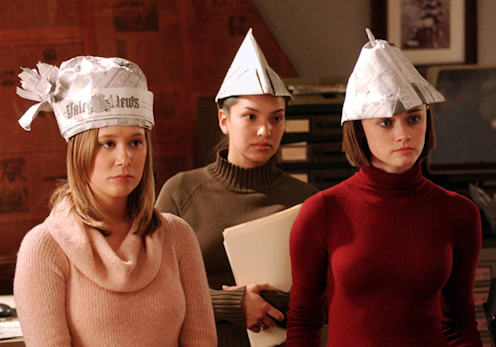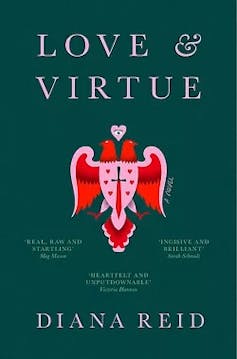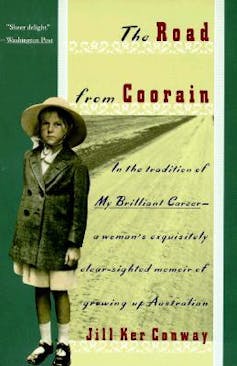Source: The Conversation (Au and NZ) – By Catharine Coleborne, Dean of Arts/Head of School Humanities and Social Science, University of Newcastle

A new campus novel suggests the story of the university in Australia might be almost in vogue, if only as a backdrop for big questions about navigating human failings and representations of truth, and the topical issue of sexual consent.
Diana Reid’s new campus novel, Love and Virtue, is set in Sydney. Reid is a graduate of the University of Sydney, and the novel’s action takes place in a residential college, where the central character Michaela has a sexual encounter with a male student after a drunken night during O-Week. She must also navigate the politics of class and friendship in the way her experience is later appropriated and represented.

Goodreads
Australian readers and audiences have had meagre opportunities to examine the world of the university in novels, television or film, especially compared to North American examples, and British stories set at the Oxbridge universities, among others.
Rory Gilmore of the television series Gilmore Girls (2000-2007) dreamt of going to Harvard for her whole girlhood, ending up at Yale instead. Donna Tartt’s novel The Secret History (1992) is set at a small liberal arts college in Vermont, probably based on Tartt’s alma mater, Bennington College. Recently, Netflix series The Chair had fun with the complexities of university administration.
Read more:
New Netflix drama The Chair is honest and funny, but it still romanticises modern university life
These narratives share the setting of the university campus as a place for self-discovery and freedom, but also as sites in which to negotiate power, sex and relationships. Some learning in lectures also features, along with libraries, often depicted as imposing structures with weighty traditions.
From the rarified contexts of elite US colleges to the dreaming spires of Evelyn Waugh’s Brideshead Revisited to sardonic depictions of academic life in the novels of British author David Lodge, stories about university life may seem plentiful.
Yet unlike England and America, there are few such readily available “popular” cultural narratives set here. Works of fiction do exist, as academic Colin Symes noted in a 2004 article. Symes cited Australian novels from the 1970s and 1980s such as Laurie Clancy’s The Wildlife Reserve, a story about the post-Dawkins university that muses over the legacy of earlier academic administrators. In the late 1990s and early 2000s, two other university-themed novels were published: No Safe Place by Mary-Rose MacColl and Academia Nuts by retired Sydney academic Michael Wilding.
Arguably none of these books — forming a slim canon of campus novels — made a large impression on the popular idea of the university in Australia, even if they investigated interesting ideas about the changing nature of education and workplaces in these decades.
Yet this relative cultural silence about universities is despite their rich history as a catalyst for social change and the many thousands of experiences of graduates.
Universities and social change
In the 1970s, Australian universities were beginning to expand and open up to a wider range of students, including mature-age women and new generations of politically aware young people. The Australian “idea of the university” was formed in a “new wave” of institutions such as La Trobe, Deakin and Griffith, as Glyn Davis noted in his 2017 book of the same name.
Hopefulness about the value and purpose of tertiary education was palpable. Campuses were lively, and students sought debate, difference, dialogue. New areas of study were being framed, including critical humanities and social science fields. University education in Australia also benefited from the intellectual traditions and influences of the British model and the emerging style of North American institutions.
The public, then, perceived universities as useful. Their presence assured a society founded in intellectual achievement and personal growth as much as jobs and degrees.
Read more:
The Australian idea of a university
Australian stories of the university
There are some stories to draw on as we plot this larger picture of the university experience in Australia. Jill Ker Conway’s memoir The Road From Coorain is one minor exception. Conway, who grew up on a sheep farm in Coorain, New South Wales, studied at the University of Sydney before leaving Australia for university education in the US in 1960. She was later president of the famous Smith College for women.

Goodreads
Cassandra Pybus’s book Gross Moral Turpitude (1993), though not a novel, featured a legal case around sexual misconduct at the University of Tasmania. In 1996, Helen Garner published The First Stone, her controversial interpretation of the sexual harassment case at the University of Melbourne’s Ormond College.
In a lighter vein, a film set at the University of Melbourne from the mid-1990s, Love and Other Catastrophes, featured the campus and starred Alice Garner (who later wrote a memoir The Student Chronicles). The Secret Life of Us also explored the lives of university graduates in Melbourne making their way in life.
Read more:
I turned to The Secret Life of Us for warm nostalgia. Instead, I found jarring memories
Yet the overwhelming lack of a collective memory of university education and the student experience in Australia now presents a serious problem in our social, cultural and political life.
Narratives about university found in both US and British contexts highlight questions of personal journeys into education and beyond, and rites of passage. They touch, too, on issues of inclusion and exclusion and campus culture.
In Australia, we have barely even imagined these spaces in public debate, much less celebrated or critiqued them. When it comes to thinking about the value, purpose and role of universities in public life, we are so far behind that we don’t even have a common language.
Talking about universities from the student, not staff, point of view, would be a good place to start as we reflect on generations of change in higher education.
![]()
Catharine Coleborne is affiliated with the Australasian Council of Deans of Arts, Social Science and Humanities (DASSH), the peak body for university education in these fields in Australia and New Zealand.
– ref. Beyond Oxbridge and Yale: popular stories bring universities to life — we need more of them in Australia – https://theconversation.com/beyond-oxbridge-and-yale-popular-stories-bring-universities-to-life-we-need-more-of-them-in-australia-168943







